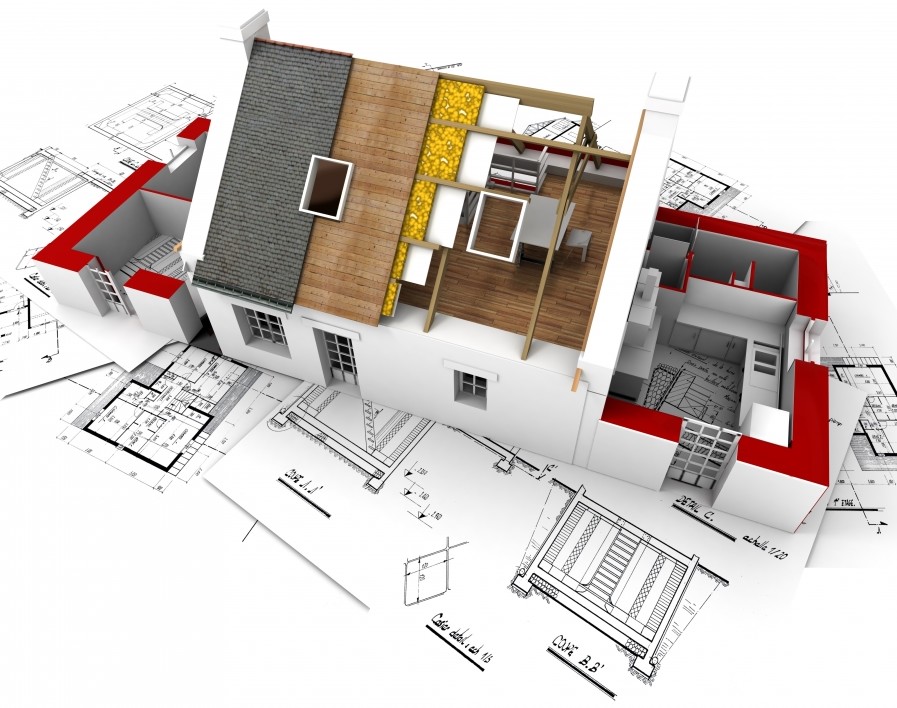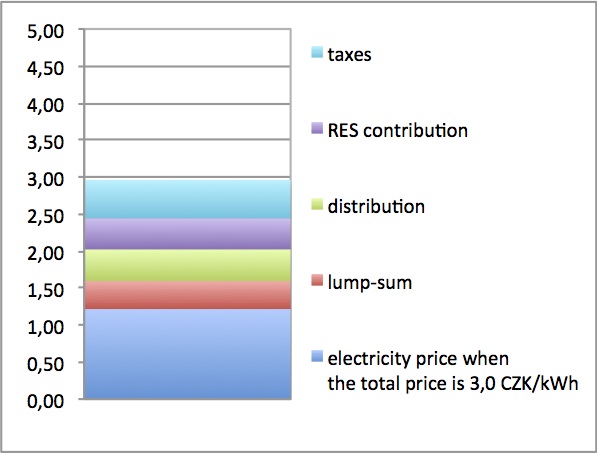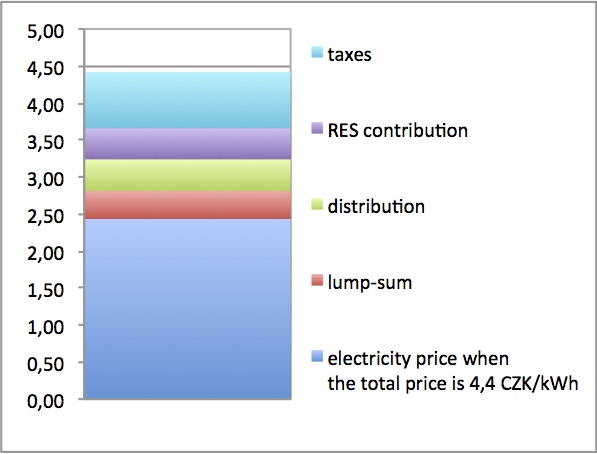
Being a tax advisor is a hard job – Mr. Podlešák spends up to 14 hours at the computer dealing with hundreds of thousands of figures every day. So to relax he goes down to his
workshop in the basement…
More
![]() You can download PDF file here.
You can download PDF file here.

|
When we talk about the cheapest heating we usually refer to the comparison of three types of heating:
We can very often hear our customers´ opinions like: “Oh my dear, those infrared panels run on electricity, their operation is terribly expensive so we rather buy a heat pump or a gas boiler.” Below, we will illustrate that even if the price of electricity increases (as well as gas) and after calculating all costs involved in the purchase and operation of the heating system infrared panels are still the best. The best way how to get to sensible results is to choose a test case (a house) and to calculate the total costs for heating in the next 25 years for the three heating systems mentioned above. We will proceed step by step clearly showing how we obtained the particular cost items and how they can affect the total calculation. We would like to point out that this calculation will show us how enormous the amount of money that we spend on heating is and that the right choice of a heating system can save us a considerable amount of money. Parameters of a test house
Input energy prices The power price after accounting for lump sum payments at the rate D45d and tariff NT (low tariff) is 3.0 CZK/kWh. The price of gas after accounting for lump sum payments is 2.0 CZK/kWh. At first, when comparing the particular heating systems we will not consider the fact that the energy price may increase. We will do that at the end for several energy price growth rates over the next 25 years. Especially for electricity it is necessary to realize that the total price for the supply of electricity includes several items, where the price of bulk electricity is in fact set by the power market whereas the second part of the price is set by regulated items such as distribution and renewable resources contribution and taxes (on electricity and VAT). So if you double the price of bulk electricity the total price will not double. See the following graphs which illustrate the price for the supply of 1kWh of electricity. The second graph illustrates the case of doubling the price of bulk electricity.  
|
|
Pure and simple consumption So let’s stay on the ground of the suppliers of heat pumps and calculate the total consumption of particular systems over the next 25 years. According to the graph it is evident at the first sight that the heat pump was absolutely unrivalled. |
|
Purchase costs significantly contribute to the total costs of heating.
After including all above mentioned purchase costs into the graph, we will get the following:
This graph somewhat differs from the case when the mere consumption is considered. |
|
Producers of heat pumps usually specify the Coefficient of Performance COP (ratio between the amount of input and output power) of about 3.5. But this number usually refers to the outside temperature of 7°C and the temperature of output water of 35°C. If the outside temperature is declines, COP changes considerably. If the temperature is about -8°C, the COP figure is below 2. For the considerations below we will use the average COP 2.5. Unlike the case of a heat pump or infrared panel, when we look at gas we have to include the electricity consumption of the circulation pump (pumps). The pump does not have a big output, however, weather-compensated control operates round the clock which sums up to about CZK 3 500 for the heating season. In addition, there is no low tariff NT rate for gas heating available. Thus in comparison with a heat pump and infrared panels we will have to pay more for electricity consumed for routine operation of the house. This increase is about CZK 4 500 per year. Since infrared panels instead of heating up air heat up all solid objects, floors and walls, they do not need to reach such high air temperature as convection system to reach the same thermal comfort. The difference is about 10% - 15% less of energy consumption. If all above-mentioned parameters are included the graph looks as follows: In this case the heating system based on infrared panels seems pretty competitive. |
|
Another item which needs to be taken into account consists of the repairs and maintenance of the individual heating systems.
Thus after including maintenance and repairs in the chart we get the following:
Now the infrared panel heating system turns out to be the most economic. But let’s move on. |
|
Majority of new houses are built or bought thanks to a mortgage loan. Naturally, the cheaper heating system we use, the lower mortgage and mortgage interests we have to repay. So we take into account the mortgage interest rate of 5% p.a. and 20 years mortgage duration. The graph thus includes both energy costs and mortgage installments over 20 years used to repay the investment into the heating system. After the mortgage is repaid only the energy costs are included.
Here you can see that the investment connected with mortgage totally disqualifies the heat pump and the results are not very good for the gas boiler either. |
|
We are getting to the last but not the least important part of our considerations. How will the annual energy price increase be reflected in our calculation? Today the electricity price is set by the stock market price and currently is about 50 € /MWh. A significant price increase is unlikely to happen due to the expectations of CEZ that the market price is going to drop. To ensure the situation CEZ has claimed that the state buys electricity from them on the fixed price. Should a new nuclear power plant unit be commissioned in 2032, the fixed price means that the state is to keep the price of €60-70 even if the market price is lower. The price of gas reasonably follows the price of electricity. The following two graphs illustrate an increase in the low tariff NT from 3CZK/kWh to 6 CZK/kWh in the first case and to 7.5 CZK/kWh in the second case (which would correspond with the price of bulk electricity of about 200€/MWh).
We can see that even if electricity prices increase PION ThermoGlass or PION Classic infrared panels are still the most cost-efficient. We can have a look at the case, when the price of gas does not increase as rapidly as the electricity price. In this case we took into account price increase from 2.0 CZK/kWh to only 3.50 CZK/kWh.
|
|
After calculating all costs involved in the purchase, operation and maintenance of particular heating systems, the heating system based on ThermoGlass infrared panels is the best, even if we assume an enormous increase in electricity prices. The last graph illustrates the total annual costs for particular heating systems including hot water heating.
|
|
Infrared panels are advantageous from economical point of view. In addition there are also other significant advantages of infrared panels.
|